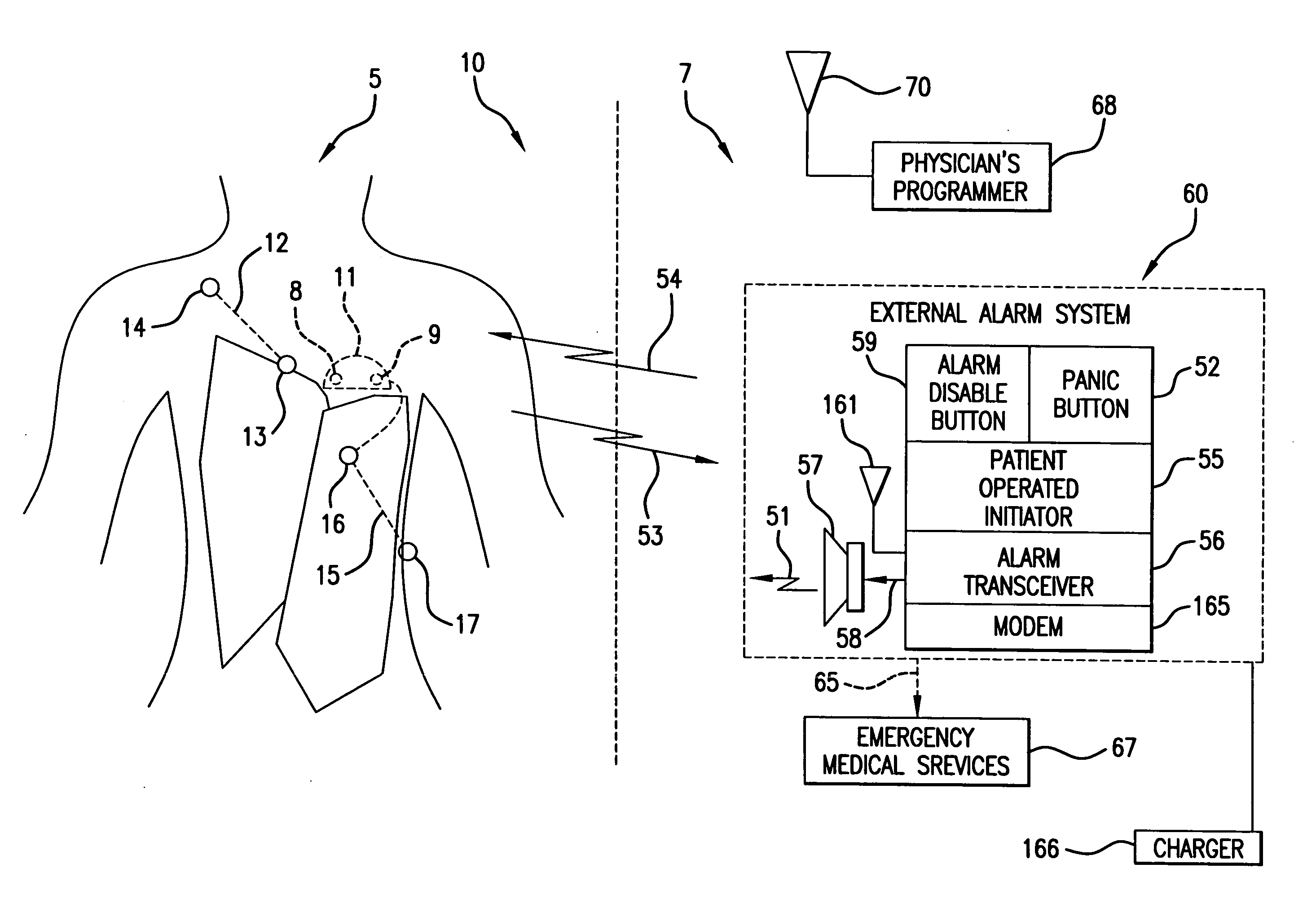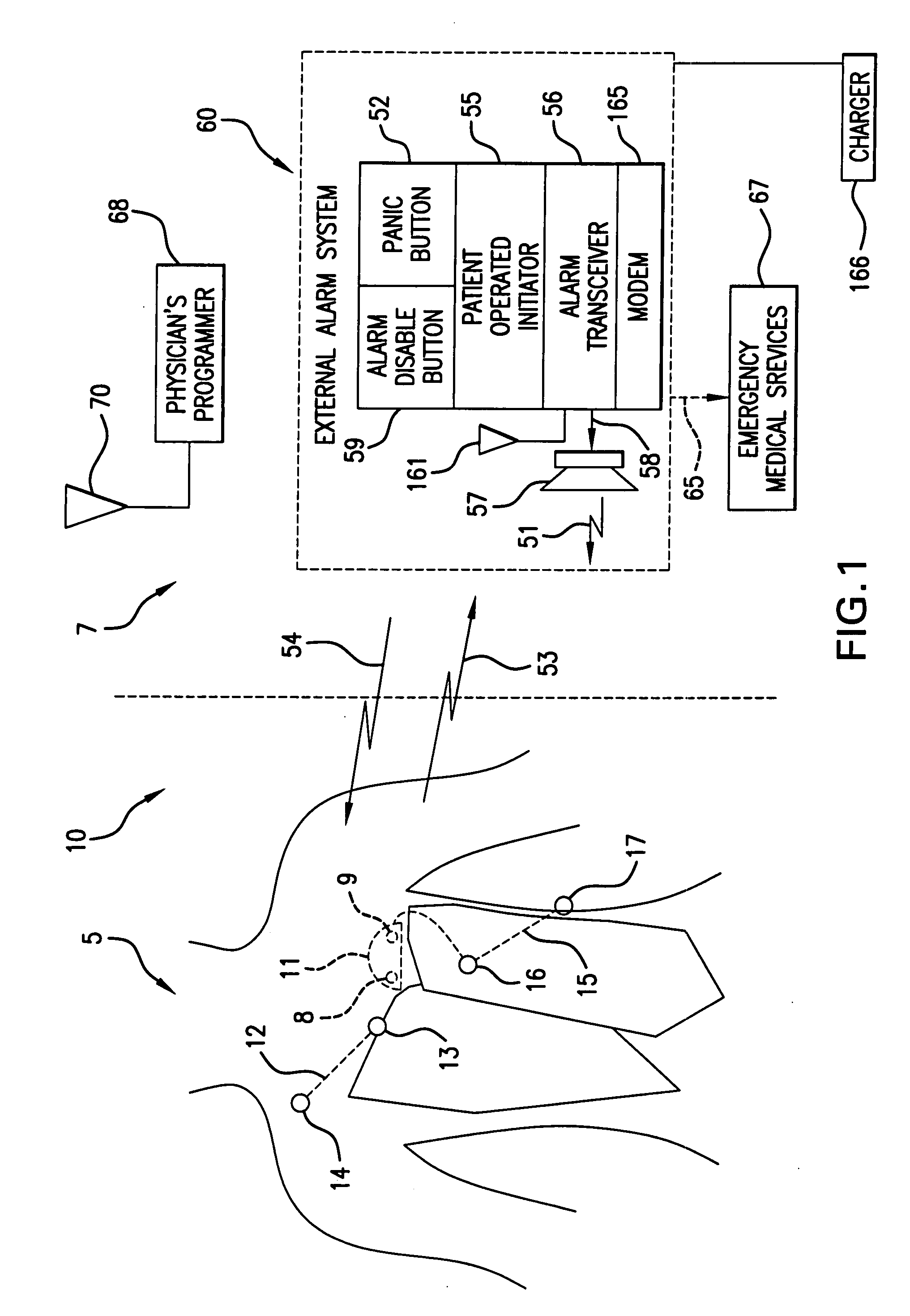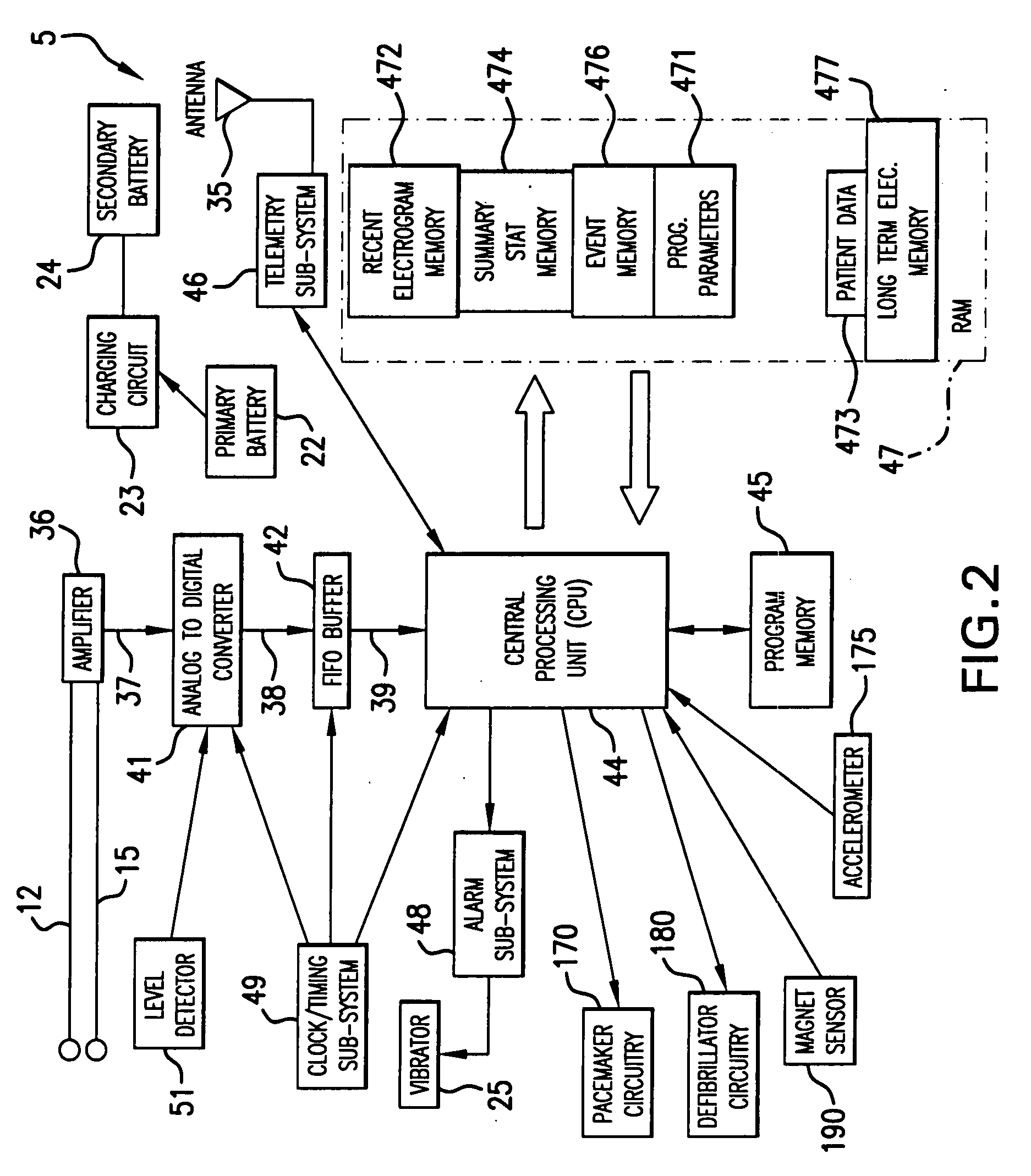Waveform feature value averaging system and methods for the detection of cardiac events
a technology of waveform feature value and cardiac event detection, which is applied in the field of medical device systems, can solve the problems of inconvenient patient care for monitors that include wearable sensors, high risk of ami, and high risk of coronary atherosclerosis
- Summary
- Abstract
- Description
- Claims
- Application Information
AI Technical Summary
Problems solved by technology
Method used
Image
Examples
Embodiment Construction
[0038]“Lead” means at least two sensors that are configured to detect the electrical potential between two points.
[0039]An “average” or “average measure” or like phrases refers to a central tendency of a data set. Many types of measures may be used as averages, including without limitation the arithmetic mean, median, or an exponential average.
[0040]A “curvature function” maps a set of points of a time series waveform (“domain”) to a set of output (curvature) values that is both correlated with the curvature of the waveform in the domain and has fewer members than the number of points in the domain. An example of a curvature function C with a set of output values with one member is C=W(x+n)−2*W(x)+W(x−n), where W(x) is the value of a time series waveform at sample / point x, where n is an integer, and where the set {x−n, x, x+n} is the domain of the curvature function. In this example, there is a one to one time series correspondence between C and W. An example of a (global) curvature...
PUM
 Login to View More
Login to View More Abstract
Description
Claims
Application Information
 Login to View More
Login to View More - R&D
- Intellectual Property
- Life Sciences
- Materials
- Tech Scout
- Unparalleled Data Quality
- Higher Quality Content
- 60% Fewer Hallucinations
Browse by: Latest US Patents, China's latest patents, Technical Efficacy Thesaurus, Application Domain, Technology Topic, Popular Technical Reports.
© 2025 PatSnap. All rights reserved.Legal|Privacy policy|Modern Slavery Act Transparency Statement|Sitemap|About US| Contact US: help@patsnap.com



